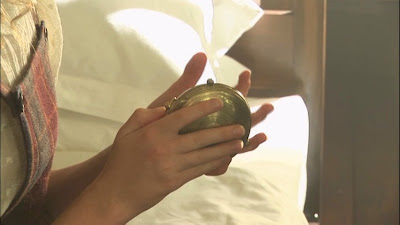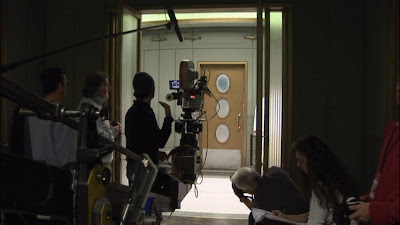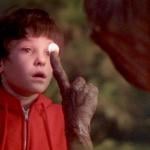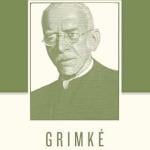
I haven’t had a chance to listen to the director’s commentary yet, but I checked out the bonus disc that comes with The Golden Compass today, and one comment in particular stood out from the nearly three hours of behind-the-scenes documentaries. In the featurette on the film’s production design, executive producer Mark Ordesky states:
Dennis Gassner started with the idea of Lyra and her world as this pure place, so to use — to sort of take that into a visual metaphor, he came up with the idea of the circle, you know, a perfect circle. A circle’s a pure form, and this’ll be cool when you’re watching the movie. If you look closely in the production design of Oxford, you’ll see the circle represented in a number of ways. The spirit projector that Asriel shows, the lenses are these perfect discs. The alethiometer is a perfect form, it’s a circle. And you move from Oxford and you get to London, you start to see a different form, which is the oval. And the oval is an impure form, it’s an impurity of the circle. And as you track his production design — when you look at Bolvangar, you look closely at Bolvangar, you’ll see that oval. Even if you look at the Magisterial emblem, you’ll see it. So it’s a changing of the form, and in a weird kind of way, the villainy of the movie and the books is trying to change Lyra, in the same way that the perfect circle that is Lyra, that is the golden compass, that is Oxford, gets bent and changed. And I’ve really, really oversimplified it, but if you’re looking for one sort of visual metaphor for Dennis’s approach to production design, that would be it.
I find this striking because the film and the books, broadly speaking, are about the loss of innocence and the acquisition of knowledge, and historically, I have long associated the contrast between circles and ovals with Johannes Kepler‘s discovery in the 17th century that planets move in imperfect ellipses rather than the perfect circles that astronomers had believed in for centuries. In other words, I always thought circles were associated with the pre-modern immature innocence that Philip Pullman associates with Adam and Eve, while ovals were associated with the modern grown-up knowledge that Pullman associates with the serpent and the Fall. In other words, I would have thought that Pullman preferred ovals to circles, just as he prefers knowledge and the messy imperfections of this life to innocence and the promises of perfection made by religion. But the film seems to go the other way, making the circles good and the ovals bad. Fascinating.
Here are some screen captures of the Oxford circles:
And here are some screen captures of the non-Oxford ovals:
Click on any of the images above for a larger version.




















